The identification of craquelure is of great importance in the Conservation and Restoration of works of art, particularly in the Restoration of Paintings and the Restoration of Ceramics, since its origin can be differentiated. We can find aging craquelures, craquelures originating in the production of the work of art itself or those that are intended to be counterfeited.
You can learn more in the Technical Course in Conservation and Restoration of Paintings| Ceramics Restoration | Sculpture Restoration
We’ll address
1 – what is craquelure
2 – types of craquelure
3 – importance in the conservation and restoration of paintings
4 – importance in the conservation and restoration of ceramics
5 – its importance in the authentication of works of art
What is Craquelure
A network of small cracks or fissures that appear on the surface layer of objects, especially paintings, ceramics and glass.
These can occur naturally due to the ageing of the materials, they can be produced during the production of the piece and be an artistic effect or a manufacturing flaw. They can also be deliberate later additions.
Types of craquelure
As we have seen, it can be both a natural phenomenon and an intentional technique designed to add aesthetic or historical value to a piece of art.
We distinguish three main types:
- Ageing (so-called natural);
- Premature (natural or not);
- False craquelures
In the Conservation and Restoration of Works of Art
In the conservation and restoration of paintings
The craquelure of age
They result from the movement of the support and are mainly in parallel lines, in the direction of the warp thread in the case of canvas supports. They are caused by changes in tension and relaxation of the fabric.
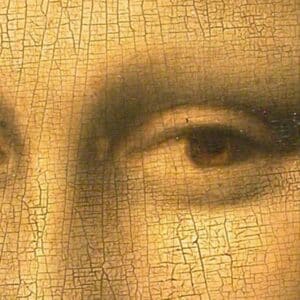
We also find other reasons, such as local tensions (poorly stretched canvas, poorly tightened wedges, too strong shrinkage, poor quality weaving or knots), the nature of the medium, (an egg painting snaps more easily than an oil painting) and/or the technique used by the painter; as well as the thickness of the preparation layer, the means of making the paste, its thickness, its overlaps, the medium/pigment ratio, the nature of the pigments.
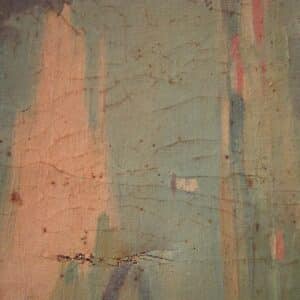
They are also found in the chromatic layer of polychrome wood sculptures.
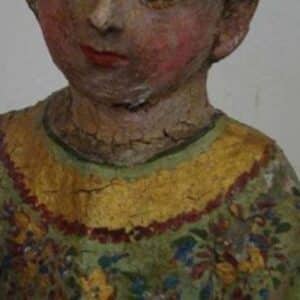
They do not present a danger in themselves, they are simply a new state of equilibrium of materials in the work.
Age craquelure is to be respected, it is an integral element of the patina.
Premature craquelure
They are related to execution techniques, quality of materials, and very often both.
Among the problems related to execution techniques, we have thin paintings over fat or the abuse of drying agents.
There are also cases of excess of medium, experimentation with a new material, poor knowledge of the properties of pigments, incompactness between certain materials.
Poorly executed preparations or with poor quality materials, dirt or premature application of varnish can also cause this type of cracking.
False craquelure
There are two categories:
- Those caused with the intention of making a fake through the abuse of the drying agent, use of varnish or craquelure medium or through drying.
- Those reconstituted by the restorer to reintegrate the image.
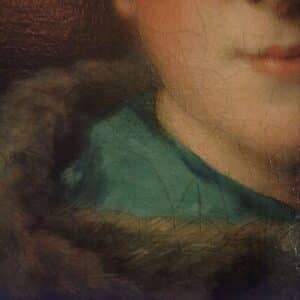
In the conservation and restoration of ceramics
Ageing craquelé
These are small cracks in the glaze layer caused by a difference in the expansion processes of the ceramic pastes and the glaze itself.
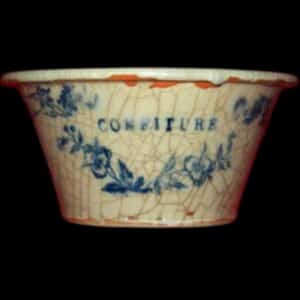
They are part of the history of the objects and attest to their antiquity and even their authenticity.
They are irreversible and have the consequence that, in the very small cracks that are formed, the ceramic paste is not protected by the glaze and is therefore in direct contact with external agents. Hence the greater accumulation of dirt and dust in these cracks.
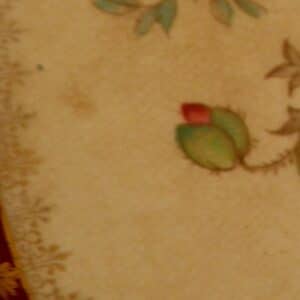
Premature craquelure
It can have two origins:
1 – Faults in the production of the ceramic piece when applying the glaze or in the firing process.
2 – A deliberate ceramic production process with the aim of achieving a decorative effect. Usually through rapid cooling of the glaze.
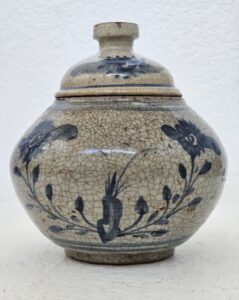
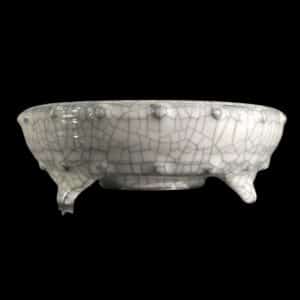
Very common in Chinese and Korean ceramics, but also used in contemporary ceramics.
False craquelures
As in painting, they can be made for the purpose of forgery or as part of the chromatic reintegration of gaps in order to give an aesthetic reading to the work of art.
As a method of authenticating works of art
The analysis of craquelures can be part of the methods for dating and authenticating works of art since the reproduction or forgery of small cracks related to the ageing of chromatic layers or glazes, being a natural process, are practically impossible to reproduce.
Conservation and restoration techniques
Certified training institution DGERT nº 1800/2015.
In online courses with certificate in conservation and restoration techniques, learn the ethical principles and intervention methodologies adequate for each type of material.
Learn the differences, limits and levels of intervention in preventive conservation, curative conservation and restoration.


